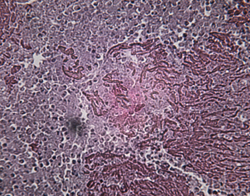The immunogenicity of latent M.tuberculosis
Mycobacterium tuberculosis (Mtb) - the causative pathogen of tuberculosis – has a unique property of adapting to different environments inside the host in order to survive. To avoid clearance by the immune system the pathogen switches to a dormant status where it can remain for years without causing observable disease. The switch implies changes in expression of antigens required for activation of T lymphocytes primed during the early phase of infection. To further elucidate the mechanism of dormancy, the EU funded the initiative ‘Immunogenicity of Mycobacterium tuberculosis lipids in the non replicating status of latency’ (MILD-TB). The project analysed the bacterium variations in lipid metabolism and composition, since immune responses against mycobacterial lipid antigens represent an important mechanism of defense. using an in vitro culture method that resembled Mtb dormancy, project partners analysed the immunogenicity of lipids isolated from non-replicating Mtb in vivo. Lipids from clinical isolates from endemic areas were also analysed and compared with those produced by replicating Mtb. to elucidate the in vivo activation of T lymphocytes by dormant Mtb lipids, project partners used these lipids to immunise a CD1b transgenic mouse capable of eliciting mycobacterial lipid antigen-specific T cell responses. The precise mechanism underlying this T cell-mediated dormant Mtb killing was also investigated. the MILD-TB project succeeded in providing novel insight into the immune evasion mechanism of Mtb during dormancy. The identification of dormancy-related lipids will pave the way for the development of novel therapeutic or prophylactic regimes against tuberculosis.







